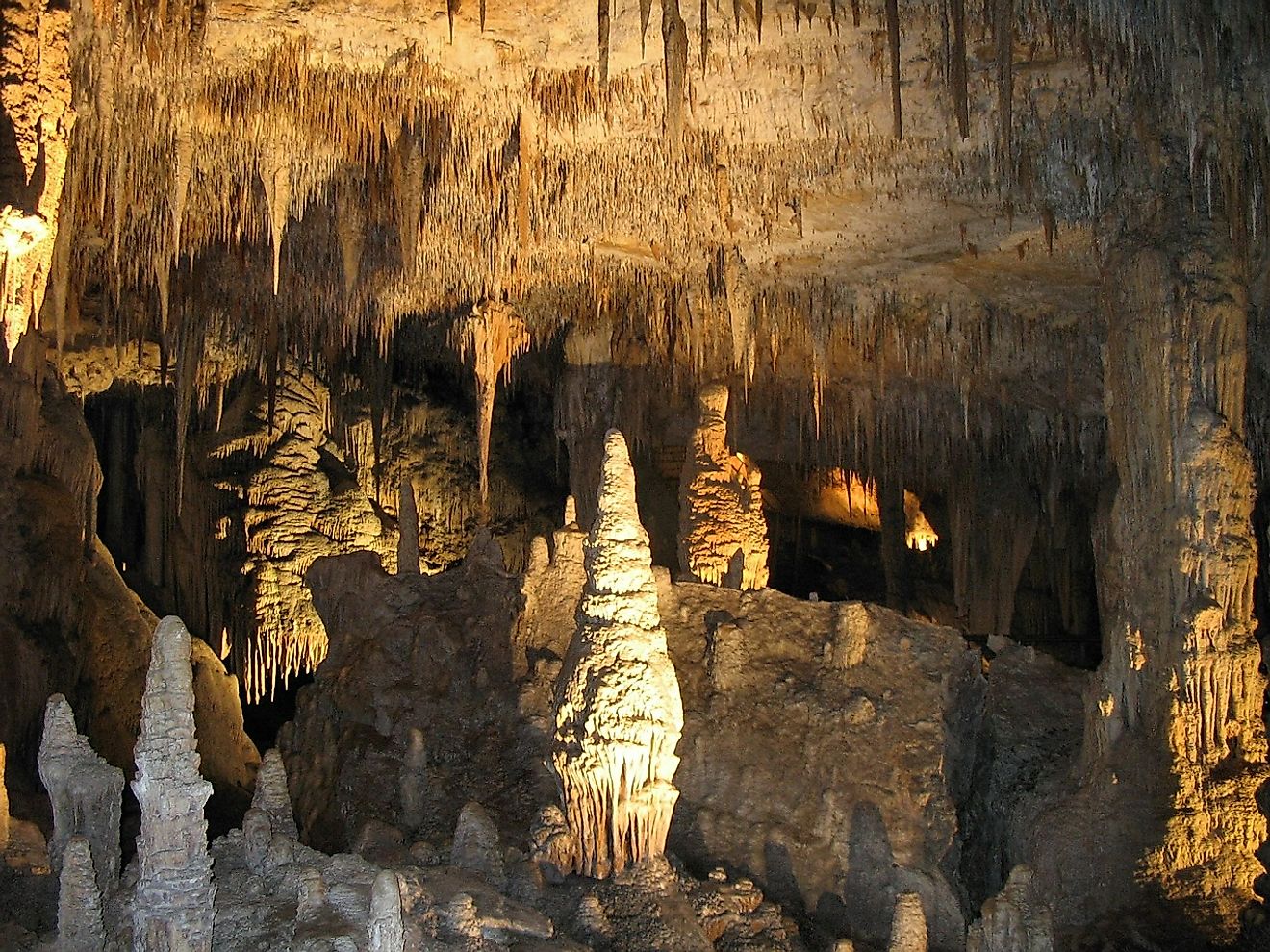The Different Types Of Stalagmite Formations

5. What Is A Stalagmite? -
A stalagmite is a cave formation or speleothem that rises from the floor of a cave and may be made of minerals, ice, lava, sand, peat, and other materials. They are formed by the accumulation of material dripping from the ceiling of caves. Stalagmites are also found in artificial environments where they are classified as cathemites.
4. Limestone Stalagmites -
Limestone stalagmites are the most common form of stalagmites that are found growing from the ground of limestone caves. These stalagmites are formed of calcium carbonate or other mineral deposits that precipitate out from mineralized water flowing in the cave environment. Stalagmites in limestone caves take thousands of years to attain a significant length. Tourists visiting the caves are advised not to touch the stalagmites as the growth of these formations is affected by the oil and dirt present in the human hand.
3. Ice stalagmites -
Ice stalagmites, also called icicles, are either seasonal or permanent in nature, and are found in cave environments where the temperature is below the freezing point of water. Ice stalagmites might form when water vapor in the cave environment freezes or when surface water enters the cave via cracks or openings on the surface, falls on the cave floor, and freezes to form an ice stalagmite. Ice stalactites are less common than ice stalagmites since the warmer air towards the cave ceiling might cause the frozen water to thaw.
2. Lava Stalagmites -
Lava stalagmites or lavacicles are lava outgrowths from the floor of a lava tube or a lava cave. These are formed by material dripping from the roof of the lava tube on the ground. These stalagmites are rarer than the stalactites found in lava caves as the dripping material often falls on flowing lava and is carried away by the lava instead of accumulating on the ground. Lava stalagmites, unlike their limestone counterparts, form only within a few hours to few days. However, once the lava flow stops so does the growth of these stalagmites. Hence, if these stalagmites break, they cannot grow back.
1. Stalagmites In Concrete Structures -
Classified as cathemites, stalagmite-like structures also form on the ground beneath concrete structures. This formation happens when calcium ions leach out of degrading concrete and mixes with water to form a calcium leachate solution. When this solution falls on the ground and absorbs carbon-dioxide, calcium carbonate precipitates are formed on the ground. These concrete-derived stalagmites only grow a few centimeters above the ground.











